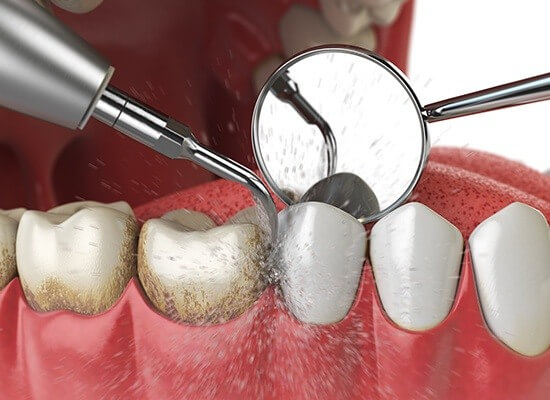Dental Code for Gross Debridement
Gross debridement is an essential preliminary dental procedure designed to remove extensive plaque and tartar buildup before a detailed examination or further treatment. This guide will explore the significance of gross debridement, its CDT code, procedural steps, benefits, and cost implications, ensuring a comprehensive understanding of the process.

2. Understanding Gross Debridement in Dentistry
Definition and Purpose
Gross debridement is a procedure performed to remove heavy plaque and calculus deposits that obstruct a dentist’s ability to conduct a thorough oral examination. Unlike a standard cleaning, gross debridement is intended for patients who have neglected oral hygiene, leading to excessive buildup.
When is Gross Debridement Necessary?
- Patients with excessive tartar preventing a proper dental examination
- Individuals suffering from periodontal disease
- Patients experiencing severe gum inflammation and bleeding
3. Dental Code for Gross Debridement
CDT Code D4355 Explained
The Current Dental Terminology (CDT) code for gross debridement is D4355. It is defined as “Full Mouth Debridement to Enable Comprehensive Evaluation and Diagnosis.”
Billing and Insurance Considerations
- CDT Code D4355 is not a standard prophylaxis but a preparatory procedure.
- Insurance providers may cover gross debridement only when it is medically necessary.
- A follow-up visit for further diagnosis or periodontal treatment is often required.
4. Procedure for Gross Debridement
Initial Examination
Before performing gross debridement, the dentist will assess the patient’s oral health to determine if the procedure is necessary.
Steps Involved in the Process
- Pre-Treatment Evaluation – Assessing the severity of plaque and tartar buildup.
- Ultrasonic Scaling – Using high-frequency vibrations to break down hardened deposits.
- Hand Scaling – Employing manual instruments for precise removal.
- Irrigation and Rinsing – Cleaning the oral cavity with antimicrobial solutions.
- Post-Debridement Assessment – Evaluating the patient’s gums and teeth post-procedure.
Tools and Techniques Used
- Ultrasonic Scalers
- Manual Curettes and Scalers
- Antibacterial Rinse Solutions
5. Benefits of Gross Debridement
- Allows for a thorough oral examination
- Reduces gum inflammation and bleeding
- Prepares the mouth for periodontal or restorative treatments
- Improves oral hygiene and breath
6. Comparison with Other Dental Procedures
| Procedure | Purpose | When Needed |
|---|---|---|
| Gross Debridement | Removes heavy plaque for assessment | Severe plaque accumulation |
| Prophylaxis (Cleaning) | Routine cleaning of teeth and gums | Regular maintenance |
| Scaling & Root Planing | Deep cleaning for periodontal treatment | Periodontal disease |
7. Risks and Considerations
Potential Complications
- Temporary gum sensitivity
- Mild bleeding during and after the procedure
- Potential discomfort requiring local anesthesia
Post-Treatment Care
- Use prescribed antimicrobial mouthwash
- Maintain proper oral hygiene
- Schedule a follow-up dental visit
8. Best Practices for Dentists and Patients
- For Dentists: Ensure a proper diagnosis and educate patients on oral hygiene.
- For Patients: Adhere to post-procedure care guidelines to maintain oral health.
9. Cost of Gross Debridement
The cost of gross debridement varies depending on location and dental clinic policies. On average, it ranges from $75 to $250, with potential coverage from insurance if deemed necessary.
10. FAQs
Q1: Is gross debridement painful?
A: Patients may experience mild discomfort, but local anesthesia or numbing agents can be used to reduce pain.
Q2: How long does the procedure take?
A: It usually takes 30 to 60 minutes, depending on plaque severity.
Q3: Will my insurance cover gross debridement?
A: Insurance may cover the procedure if it is deemed necessary for further treatment.
Q4: Can I eat after gross debridement?
A: It is recommended to wait at least one hour before eating and avoid hot, spicy, or hard foods.
Q5: How often should I get a gross debridement?
A: It is typically done as a one-time procedure before comprehensive cleaning or periodontal treatment.
11. Conclusion
Gross debridement is a critical dental procedure for patients with excessive plaque and tartar buildup, ensuring proper examination and treatment. Understanding its procedure, benefits, and costs helps in making informed decisions about oral health. Regular dental visits and good hygiene practices can prevent the need for gross debridement.
12. Additional Resources
- American Dental Association (ADA): www.ada.org
- National Institute of Dental and Craniofacial Research (NIDCR): www.nidcr.nih.gov
- Dental Insurance Guide: www.dentalinsurance.com


